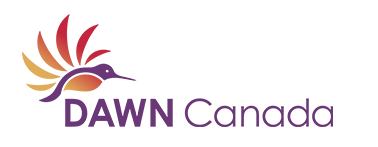Being a caregiver doesnt have to be taxing

When it comes to taking care of an aging parent, sometimes the best place for mom or dad is your own home. With a parent all set to move in, youre ready to accept the challenge of caring for a loved one with health issues. To make it a little easier, make sure you take advantage of the variety of tax credits administered by the Canada Revenue Agency (CRA) that are available for eligible caregivers.
If your parent (or another dependant) lived with you at any time in 2016, you may be eligible to claim the caregiver amount. In addition, you may also be able to claim the family caregiver amount. To qualify, your parent must be dependent on you because of an impairment in physical or mental functions. The CRA may ask for a signed statement from a medical practitioner showing when the impairment began and how long it is expected to last. However, you do not need a signed statement if the CRA has already approved Form T2201, Disability Tax Credit Certificate, for the dependant. If you and another person provide the support together, you can split the claim. To find out more, go to cra.gc.ca/familycaregiver.
Apply for tax credits
The disability tax credit is a non-refundable tax credit that helps individuals with disabilities or their caregivers (thats you!) reduce the amount of income tax they may have to pay. To be eligible, a person must have a severe and prolonged impairment in physical or mental functions. You can help your parent apply for the disability tax credit (DTC) by filling out Part A of Form T2201, Disability Tax Credit Certificate. You also have to get Part B of the form certified by a medical practitioner. Then you can send the form to the CRA for approval. For more information, go to cra.gc.ca/dtc. Individuals claiming the DTC can file online regardless of whether or not their Form T2201 has been submitted to the CRA for that tax year.
Now that theyre moved in, you recognize that making some modifications to your home would greatly improve your moms or dads mobility, independence, and even safety. However, the costs of creating a comfortable, livable home can really add up. New for the 2016 tax year, the home accessibility tax credit may allow a senior or disabled person or a person supporting a senior or disabled person, like you, to claim up to $10,000 in eligible renovation expenses. Whether you choose to build a ramp off the front door or remodel your bathroom to make the sink or shower more accessible, its important to keep your records (including receipts and invoices) so you have proof of the expenses. Generally, you must keep records and supporting documents for at least six years. For more information and to find out if youre eligible, go to cra.gc.ca/myhome and select home accessibility tax credit.
Eligible medical expenses
Between your 9-to-5 and keeping the home front in check, there just arent enough hours in the day. You realize that maybe you could use a little help managing tasks like giving medications and arranging doctors visits. If you hired an attendant, you may be able to claim amounts paid for in-home attendant care or for care received at other establishments, such as a nursing home. For more information and for how this may affect the DTC, go to cra.gc.ca/medical.
On occasion, youve had to go the distance (literally) to make sure your parent is receiving the medical attention they need. You may be able to claim transportation costs if treatment is not available within 40 kilometres of their residence (a.k.a. your home). Beyond that, if you had to travel at least 80 kilometres (one way) to an appointment, you may be able to claim accommodation, meals, and parking expenses in addition to transportation costs. For more information on how to claim travel and eligible medical expenses, go to cra.gc.ca/medical.
Completing your tax return
The deadline for most Canadians to file their income tax and benefit return is April 30, 2017. Since this date is a Sunday, the CRA will consider your return as filed on time and your payment to be made on time if it receives your submission or it is postmarked on May 1, 2017. Self-employed individuals have until June 15 to file their returns. But if they have a balance owing to the CRA, thats still due by April 30, 2017. Remember, you need to file on time to make sure there are no interruptions to certain benefit and credit payments.
With so many options available to guide you during this tax season, theres no reason to delay. To get started on your return, go to cra.gc.ca/getready.
Dont miss the latest CRA news and tax tips. Follow the CRA on Twitter @CanRevAgency.
